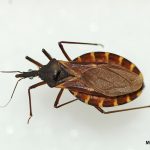How Pests Talk to Each Other
In a world where fast communication is the norm, whatever you need to know is right at your fingertips—stretching from the reviews of the latest movie to breaking news on the other side of the world and everything in-between. Many insects, like humans, have the need for instantaneous communication, but how do they do it without the use of the Internet or smartphone? Today, we dive into that question, and tell you the fascinating and ingenious ways that pests all around the world communicate with each other.
Ants
Ant colonies certainly have a need to communicate with one another, as it is not instincts alone that allows these critters to work in such synchronized teamwork and march in a style akin to a formidable military unit. Unlike many animals out there, ants do not communicate via sounds or charades, but rather through a sense of smell. Yes, you read that right—smell. These critters release a variety of different pheromones, which all mean a different thing. For example, when ants march, the lead ant—which is being driven by the smell of food—releases a pheromone trail behind him, allowing all the other ants to follow his exact path. Once food is found, they lay down a different kind marking the path, ensuring that his fellow soldiers know the way to the food source. These smells aren’t only for food, as they will also release a certain pheromone when they are crushed, alerting the colony of an impending threat.
Due to this, an easy way to treat an ant problem is by using essential oils that will overpower and mask their pheromone trail. With regular spraying, the colony will starve, thanks to their soldiers not being able to find a food source.
Rats
Definitely a pest that you may see this winter, rats communicate through two ways: body language and sounds. While they do not have a lexicon, they emit different squeaks to signal different things. A high-frequency squeak tells other rats that they are having fun or eating, yet a low-frequency squeak alerts other rats to scatter, since there is an impending danger. The only problem is that many species of rats squeak in a frequency that cannot be heard by the human ear, so many of these squeaks go unnoticed.
Furthermore, these critters use teeth grinding as a way to communicate. A type of grinding called “bruxing” (read: soft grinding) can mean contentment, whereas an aggressive grinding of the teeth can mean stress.
Squirrels
Another pest that has no doubt caused a headache or two in your life, squirrels have their very own way of communicating one another—but most of the time it is not friendly. Since they are generally solitary creatures, their audible squeaks are used to warn others from their territory. However, in a true form of gusto, the tail of the squirrel can greatly add or retract from their message. Flicking the tail is a true indicator of the critter wanting you to leave it alone, whereas a soft wag is telling you that it is starting to get annoyed.
Chances are, if you are close enough to a squirrel where it is squeaking and moving its tail, you should probably back away. Being a notorious carrier of the rabies virus, the last thing you need is a trip to the hospital, so instead head inside and give us a call.
Understanding what animals mean can be challenging, but we have broken it down to a science. No pest is too smart for us, so know that you can always trust us to handle your pest problem with professionalism and effectiveness.
Give us a call today for a free quote!





TYPO ALERT: Re: Squirrels. Another PEST……NOT pests.
Corrected. Thanks Glenn!